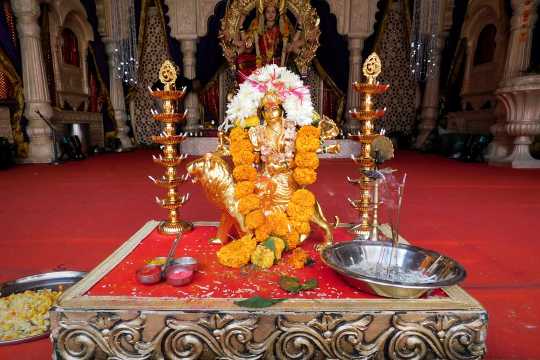The concept of the afterlife is a central tenet in almost all of the world’s major religions. Whether one believes in an eternal paradise, a cycle of rebirth, or a state of spiritual enlightenment, the afterlife provides comfort, meaning, and answers to life’s deepest questions. In this blog post, we will explore the concept of the afterlife in different religious beliefs, delving into the similarities and differences between them.
In Christianity, the afterlife is often depicted as a binary existence: heaven or hell. According to Christian doctrine, those who accept Jesus Christ as their savior will be granted eternal life in heaven, where they will live in the presence of God and experience ultimate happiness. On the other hand, those who do not accept Christ will be condemned to hell, a place of eternal suffering and separation from God.
Christianity also teaches the concept of purgatory, a temporary state of purification for souls who have died in a state of grace but still need to be cleansed of their sins. It is believed that prayers and offerings from the living can help speed the souls in purgatory on their journey to heaven.
In Islam, the afterlife is known as Jannah (paradise) and Jahannam (hell). Muslims believe that after death, their souls will be judged by Allah based on their actions in life. Those who have lived virtuously will be rewarded with eternal bliss in paradise, where they will be surrounded by rivers of milk, honey, and wine, and will be reunited with their loved ones. Those who have lived wickedly will be punished in hell, a place of torment and suffering.
In Hinduism, the concept of the afterlife revolves around the idea of samsara, the cycle of birth, death, and rebirth. According to Hindu belief, the soul is reborn into different bodies based on its karma, or actions, in previous lives. The ultimate goal of life is to break free from this cycle of samsara and achieve moksha, or liberation from the cycle of rebirth. This can be attained through spiritual enlightenment and self-realization.
In Buddhism, the afterlife is also characterized by the cycle of birth, death, and rebirth, known as samsara. However, Buddhists believe that the ultimate goal is not to achieve liberation from this cycle, but to attain Nirvana, a state of enlightenment and inner peace. By following the teachings of the Buddha and practicing mindfulness and meditation, individuals can free themselves from suffering and achieve Nirvana in this life or in future lives.
In Judaism, the concept of the afterlife is less defined compared to other religions. While some Jews believe in a form of heaven and hell, others focus more on the importance of leading a moral and ethical life in the present moment. The emphasis in Judaism is on the here and now, rather than on the afterlife.
In Sikhism, the afterlife is seen as a continuation of the soul’s journey towards union with the divine. Sikhs believe in reincarnation, but the ultimate goal is to merge with God and break free from the cycle of birth and death. Through meditation, prayer, and selfless service, individuals can achieve spiritual enlightenment and reach oneness with the divine.
In Taoism, the afterlife is believed to be a continuation of the cosmic order, with individuals reuniting with the Tao, or the ultimate reality. Taoists focus on living in harmony with the natural world and following the flow of the Tao, rather than on speculating about the afterlife.
Overall, the concept of the afterlife in different religious beliefs serves as a source of comfort, hope, and meaning for believers. Whether one believes in heaven, hell, reincarnation, or spiritual enlightenment, the afterlife provides a framework for understanding the mysteries of life and death. By exploring the similarities and differences between these beliefs, we can gain a deeper appreciation for the diversity of human religious experience and the ways in which different cultures and traditions have grappled with the questions of what lies beyond this life.

